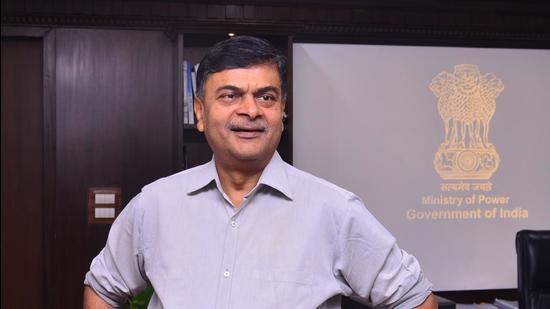The government informed Parliament that solar energy generation projects totalling 107.46 GW are either installed or under various stages of implementation or tendering. India is chasing a solar energy target of 100 GW by 2022.
Power minister RK Singh said 46.25 GW of grid-connected solar energy capacity has been installed as of October 2021, while 36.65 GW is under implementation and 24.56 GW has been tendered. The share of renewable energy sources is estimated to be around 20% of the total power demand in India in 2021-22 and 24% by 2026-27, the minister told the House.
IEA: With 290 GW of RE global installations set for record year
According to the International Energy Agency (IEA), the world is set to add nearly 290 GW of renewable power capacity in 2021, setting an all-time record for new installations. By 2026, global renewable electricity capacity will cross 4,800 GW, an increase of over 60% compared with 2020 levels, IEA said. Renewable energy capacity by 2026 will equal the current total global power capacity of fossil fuels and nuclear energy combined, the IEA added.
The report said China will lead the growth in renewable capacity followed by Europe, the US and India. The growth of renewables in India is outstanding, supporting the government’s new target of 500 GW by 2030, IEA’s Faith Birol said.
The report warned that renewables face a “range of policy uncertainties and implementation challenges,” including permissions, financing to grid integration and social acceptance. IEA pointed out that increases in commodity prices have put pressure on investment costs. should commodity prices remain high through the end of next year, the cost of wind investments would rise back to 2015 levels which will erase three years of cost reductions that for solar PV witnessed, IEA said.
To meet 450 GW by 2030 target, India needs to integrate 38 GW of 4-hr battery storage: Study
A recent study stated that by 2030, India would need 38 GW of four-hour battery storage and 9 GW of thermal balancing power projects for the cost-efficient and reliable integration of 450 GW of renewables. More than 35 GW of wind and solar capacities would need to be consistently added annually between now and 2030.
The study stated that India has a complex power system with more weather-dependent resource mix and decentralised energy sources and to manage such complexity integration of the energy and ancillary services market is more efficient than separate markets for energy and ancillary services.
The latest government guidelines define ancillary services as “service necessary to support the grid operation in maintaining power quality, reliability and security of the grid”. The latest norms aim to provide power procurement from the spot market through power exchanges to pay for ancillary services and maintain the grid frequency close to 50 Hz.
CERC grants ReNew inter-state trading licence to trade across India
The Central Electricity Regulatory Commission (CERC) granted an inter-state trading licence to ReNew Energy Markets to trade power across India. The norms require the company applying for a Category IV trading licence to have a net worth of ₹100 million (~$1.33 million) and a liquidity ratio of 1:1. The volume of electricity proposed to be traded in a financial year will not be more than 2,000 million units.
As per CERC rules, the company must not engage in power transmission during the period of subsistence of the license. The trading margin should be charged strictly in line with Trading License Regulations as amended from time to time. The licensee should regularly pay the annual license fee as per the provision of the CERC Regulations, 2012.
About The Author
You may also like
World, led by China, added 50% more RE capacity in 2023 than in 2022: IEA report
Renewables, not coal, the energy of choice for investors in India for second year in a row: Report
Hope to raise $50 million for solar in next few months; focus on Africa: ISA chief
About 6 lakh new technicians needed globally for wind energy sector by 2027: Report
12% of global growth in solar generation in first half of 2023 came from India: Report


